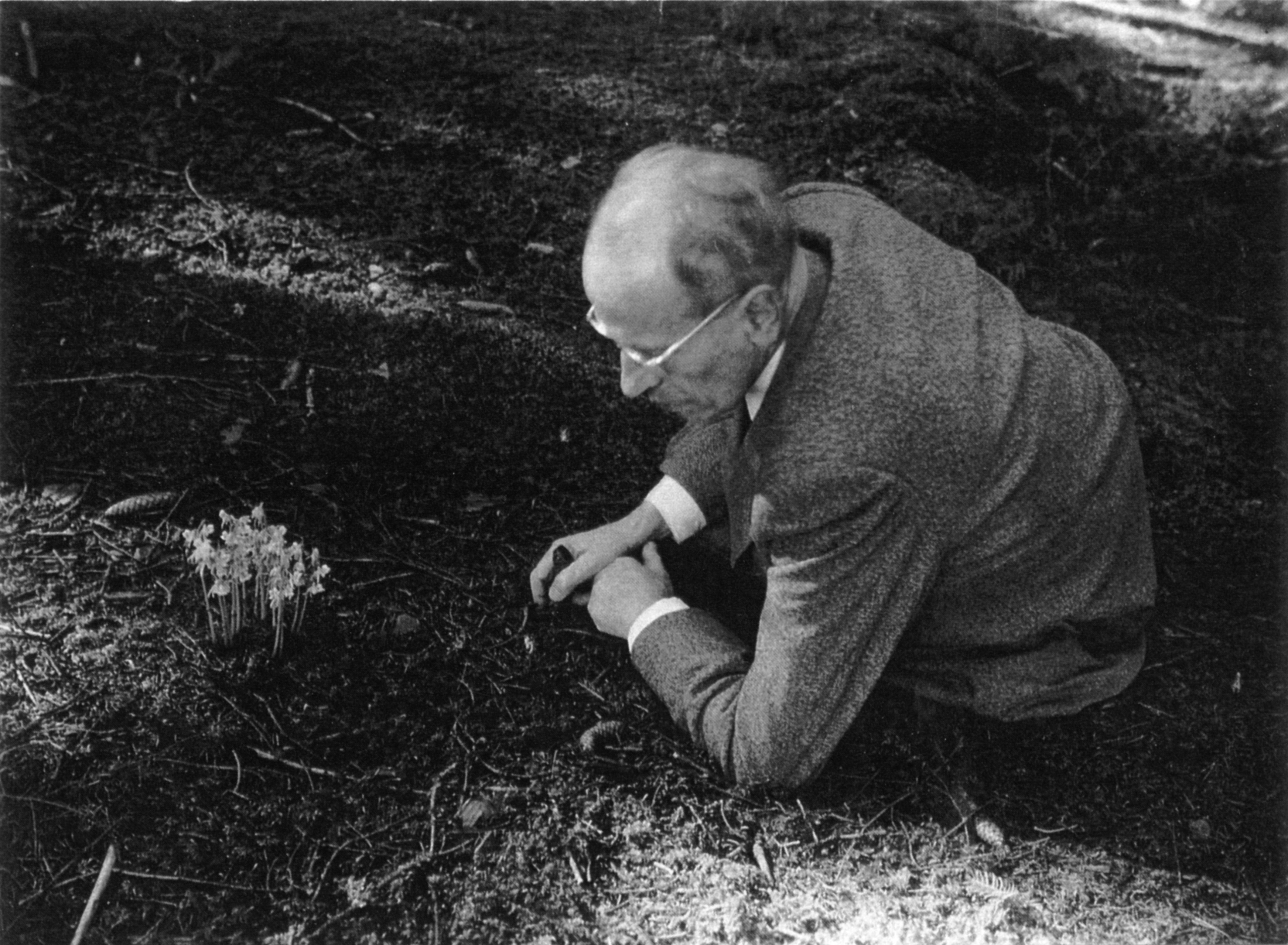|
Jennetal
The Jennetal (the suffix -''tal'' means ''dale'') is a valley cut in the Schönberg mountain and also the name of a nature reserve, where it's located. Location The Jennetal is located on the southwestern slope of the Schönberg, directly above Ebringen, at an altitude of about 1,100-1,475 ft (340-450 m) above sea level.Landesanstalt für Umwelt, Messungen und Naturschutz Baden-WürttembergJennetal/ref> History Sumser's Garden In 1931 Erwin Sumser purchased several lots of land in the Jennetal which he himself converted into a nature reserve. Upon his initiative, this nature reserve of originally 0,7095 ha became an officially protected area in 1937. In 1960 he sold this area, which is commonly called Sumser's Garden (german: Sumsergarten), along with his other private nature reserves on the Baar, to the federal state of Baden-Württemberg. Extension of the area In 1996 the nature reserve Jennetal was extended to nearly 23 ha.Landesanstalt für Umwelt, Messungen und Naturschutz ... [...More Info...] [...Related Items...] OR: [Wikipedia] [Google] [Baidu] |
Erwin Sumser
Erwin Sumser (8 October 1891 – 22 January 1961) was a German physician. He was born and grew up in Merzhausen where he came to know the Schönberg (Ebringen), Schönberg and to appreciate the multitude of orchids growing there. In 1931 he purchased several floristically valuable lots of land in the Jennetal which are called Sumser's Garden (german: Sumsergarten). Later he bought also comparable lots of land on the Baar (region), Baar. In 1960 he sold all his private nature reserves to the states of Germany, federal state of Baden-Württemberg. Bibliography Kuhn, Benno, Weshalb das Naturschutzgebiet Jennetal auch Sumsergarten genannt wird' (''why the nature reserve Jennetal is also called Sumser's garden''), inEbringer Dorfgeschichten, volume 1 pp. 1-8, Ebringen 2008  { ...
{ ...
[...More Info...] [...Related Items...] OR: [Wikipedia] [Google] [Baidu] |
Ebringen
Ebringen (Breisgau) is a municipality in the district of Breisgau-Hochschwarzwald in Baden-Württemberg in southern Germany. Geography Ebringen is located about 5 km (3 mi) south of Freiburg at the Schoenberg and belongs to the Freiburg metropolitan area. There is also a village named Ebringen near Lake Constance, part of the municipality Gottmadingen and a village Ebring (German: Ebringen), part of the municipality Tenteling in Lorraine, France, which are sometimes confused especially by genealogists. The entire area of Ebringen near Freiburg is located in the Schoenberg range, foothills of the Black Forest, which is geologically a part of the Rhine Rift Valley. ThSchoenbergis characterized by a very diverse surface geology from the Triassic and Jurassic periods of the Mesozoic, Paleogene conglomerates and volcanism and glacial loess deposits. The residential area is divided by a bypass road into the village Ebringen north of the road and the hamleTalhausensouth of ... [...More Info...] [...Related Items...] OR: [Wikipedia] [Google] [Baidu] |
Schönberg (Ebringen)
The Schönberg (earlier known as Schirnberg) is located on the southern outskirts of Freiburg im Breisgau and at 644.9 meters above sea level the Hausberg (a prominent mountain) of the municipality of Ebringen. Municipality The mountain belongs to Ebringen but the slopes also form part of the districts of Schallstadt, Merzhausen, Au, Wittnau, Sölden, and Sankt Georgen (a suburb of Freiburg). Geology Together with the Black Forest and the Rhine plain, the Schönberg forms the third prominent area of land around Freiburg, the foothills of the Black Forest. To the east, the Schönberg is separated from the Black Forest by a valley called the Hexental, to the south by the Staufen Basin, to the north the Bay of Freiburg (Freiburger Bucht) and to the west lies the Rhine Plain . The area thus enclosed is 8 km long and 4 km wide. Together with the Hohfirst (493.6 meters) in the south and the Ölberg (416.4 meters), which ... [...More Info...] [...Related Items...] OR: [Wikipedia] [Google] [Baidu] |
Hawberry
''Crataegus'' (), commonly called hawthorn, quickthorn, thornapple, Voss, E. G. 1985. ''Michigan Flora: A guide to the identification and occurrence of the native and naturalized seed-plants of the state. Part II: Dicots (Saururaceae–Cornaceae)''. Cranbrook Institute of Science and University of Michigan Herbarium, Ann Arbor, Michigan. May-tree,Graves, Robert. ''The White Goddess: A Historical Grammar of Poetic Myth'', 1948, amended and enlarged 1966, New York: Farrar, Straus and Giroux. whitethorn, Mayflower, or hawberry, is a genus of several hundred species of shrubs and trees in the family Rosaceae, native to temperate regions of the Northern Hemisphere in Europe, Asia, North Africa, and North America. The name "hawthorn" was originally applied to the species native to northern Europe, especially the common hawthorn ''C. monogyna'', and the unmodified name is often so used in Britain and Ireland. The name is now also applied to the entire genus and to the related ... [...More Info...] [...Related Items...] OR: [Wikipedia] [Google] [Baidu] |
Nature Reserves In Baden-Württemberg
Nature, in the broadest sense, is the physical world or universe. "Nature" can refer to the phenomena of the physical world, and also to life in general. The study of nature is a large, if not the only, part of science. Although humans are part of nature, human activity is often understood as a separate category from other natural phenomena. The word ''nature'' is borrowed from the Old French ''nature'' and is derived from the Latin word ''natura'', or "essential qualities, innate disposition", and in ancient times, literally meant "birth". In ancient philosophy, ''natura'' is mostly used as the Latin translation of the Greek word ''physis'' (φύσις), which originally related to the intrinsic characteristics of plants, animals, and other features of the world to develop of their own accord. The concept of nature as a whole, the physical universe, is one of several expansions of the original notion; it began with certain core applications of the word φύσις by pre-Socr ... [...More Info...] [...Related Items...] OR: [Wikipedia] [Google] [Baidu] |
Baden
Baden (; ) is a historical territory in South Germany, in earlier times on both sides of the Upper Rhine but since the Napoleonic Wars only East of the Rhine. History The margraves of Baden originated from the House of Zähringen. Baden is named after the margraves' residence, in Baden-Baden. Hermann II of Baden first claimed the title of Margrave of Baden in 1112. A united Margraviate of Baden existed from this time until 1535, when it was split into the two Margraviates of Baden-Durlach and Baden-Baden. Following a devastating fire in Baden-Baden in 1689, the capital was moved to Rastatt. The two parts were reunited in 1771 under Margrave Charles Frederick. The restored Margraviate with its capital Karlsruhe was elevated to the status of electorate in 1803. In 1806, the Electorate of Baden, receiving territorial additions, became the Grand Duchy of Baden. The Grand Duchy of Baden was a state within the German Confederation until 1866 and the German Empire until 1918, ... [...More Info...] [...Related Items...] OR: [Wikipedia] [Google] [Baidu] |
Breisgau-Hochschwarzwald
Breisgau-Hochschwarzwald (french: Arrondissement de Brisgau-Haute-Forêt-Noire) is a (district) in the southwest of Baden-Württemberg, Germany. Fifty towns and municipalities with 133 settlements lie within the district. The district itself belongs to the region of Freiburg with the region of Southern Upper Rhine. The municipal offices are in the city of Freiburg im Breisgau which is almost entirely surrounded by Breisgau-Hochschwarzwald, but is independent of it. In addition, the council has three satellite offices in Müllheim, Titisee-Neustadt and Breisach am Rhein. Geography Location Breisgau-Hochschwarzwald covers areas which are very different in scenic character: in the Upper Rhine Plain are the Markgräflerland and its foothill zone, which is continued north of the Breisgau with the hills of Kaiserstuhl, the Tuniberg and the Nimberg. Within the district, the Black Forest covers the side valleys opening onto the Rhine Plain - the Glottertal, the valley of the D ... [...More Info...] [...Related Items...] OR: [Wikipedia] [Google] [Baidu] |
Geography Of Baden-Württemberg
Geography (from Greek: , ''geographia''. Combination of Greek words ‘Geo’ (The Earth) and ‘Graphien’ (to describe), literally "earth description") is a field of science devoted to the study of the lands, features, inhabitants, and phenomena of Earth. The first recorded use of the word γεωγραφία was as a title of a book by Greek scholar Eratosthenes (276–194 BC). Geography is an all-encompassing discipline that seeks an understanding of Earth and its human and natural complexities—not merely where objects are, but also how they have changed and come to be. While geography is specific to Earth, many concepts can be applied more broadly to other celestial bodies in the field of planetary science. One such concept, the first law of geography, proposed by Waldo Tobler, is "everything is related to everything else, but near things are more related than distant things." Geography has been called "the world discipline" and "the bridge between the human and t ... [...More Info...] [...Related Items...] OR: [Wikipedia] [Google] [Baidu] |
Himantoglossum
''Himantoglossum'' is a genus of orchids native to the Canary Islands, Europe, southwest Asia and northern Africa. Its members generally have a labellum which is divided into three parts, of which the middle part is the longest. The genera ''Comperia'' and ''Barlia'' are now included in ''Himantoglossum''. Species , the World Checklist of Selected Plant Families recognizes the following species: *'' Himantoglossum adriaticum'' H.Baumann - Italy, Austria, Czech Republic *''Himantoglossum calcaratum'' (Beck) Schltr. - Greece, Bulgaria, European Turkey, former Yugoslavia *'' Himantoglossum caprinum'' (M.Bieb.) Spreng. **''Himantoglossum caprinum'' subsp. ''caprinum'' - Crimea, Iran, Iraq, Turkey, Palestine, Israel *''Himantoglossum comperianum'' (Steven) P.Delforge (syn. ''Comperia comperianum'') - Crimea, Greek Islands, Turkey, Iran, Iraq, Syria, Lebanon, Palestine, Israel *''Himantoglossum formosum'' (Steven) K.Koch - Caucasus, Iran *''Himantoglossum galilaeum'' Shifman - I ... [...More Info...] [...Related Items...] OR: [Wikipedia] [Google] [Baidu] |
Orchid
Orchids are plants that belong to the family Orchidaceae (), a diverse and widespread group of flowering plants with blooms that are often colourful and fragrant. Along with the Asteraceae, they are one of the two largest families of flowering plants. The Orchidaceae have about 28,000 currently accepted species, distributed in about 763 genera. (See ''External links'' below). The determination of which family is larger is still under debate, because verified data on the members of such enormous families are continually in flux. Regardless, the number of orchid species is nearly equal to the number of bony fishes, more than twice the number of bird species, and about four times the number of mammal species. The family encompasses about 6–11% of all species of seed plants. The largest genera are ''Bulbophyllum'' (2,000 species), ''Epidendrum'' (1,500 species), ''Dendrobium'' (1,400 species) and ''Pleurothallis'' (1,000 species). It also includes ''Vanilla'' (the genus of the ... [...More Info...] [...Related Items...] OR: [Wikipedia] [Google] [Baidu] |
Service Tree ''
{{Plant common name ...
Service tree can refer to: * Species of ''Sorbus'', particularly: ** ''Sorbus domestica'' ** ''Sorbus latifolia'', service tree of Fontainebleau ** ''Sorbus torminalis'', wild service tree ** ''Sorbus pseudofennica'', Arran service tree See also * Serviceberry, ''Amelanchier ''Amelanchier'' ( ), also known as shadbush, shadwood or shadblow, serviceberry or sarvisberry (or just sarvis), juneberry, saskatoon, sugarplum, wild-plum or chuckley pear,A Digital Flora of Newfoundland and Labrador Vascular Plants/ref> is a g ... [...More Info...] [...Related Items...] OR: [Wikipedia] [Google] [Baidu] |





.jpg)

